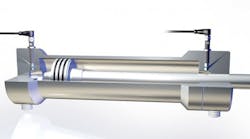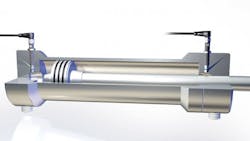Balluff Inc., Florence, Ky., introduced what it says is the first high-pressure inductive analog position sensor. Rated for pressure to 500 bar (7250 psi), the sensor is intended for hydraulic valve control and hydraulic cylinder cushioning applications, especially in mobile hydraulic equipment.
The sensor has a 0.5 to 2 mm sensing range and can be used as a normally open (NO) or normally closed (NC) switch for final position detection or for analog control of valves. It is housed in a M12 stainless steel threaded case and contains high strength ceramic sensing faces and proprietary seals to accommodate high pressure.
For more information, visit www.balluff.com.


